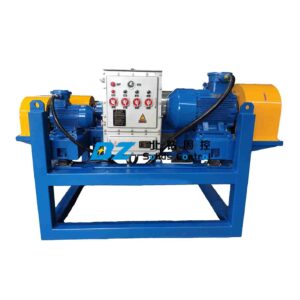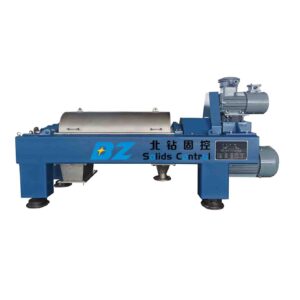Common faults and maintenance methods of drilling fluid centrifuge
Drilling fluid centrifuges use the principle of centrifugal sedimentation to separate drilling suspensions. They are widely used in fields that require solid-liquid separation such as petroleum, chemical industry, food, pharmaceuticals, heavy stone recovery, and environmental protection. It is the core of the mud purification system in petroleum drilling. One of the equipments plays an important role in protecting the drill bit and accelerating the drilling speed.
With the improvement of oil drilling technology, the performance of drilling fluid centrifuges has also been improved. The common maintenance and maintenance of drilling fluid centrifuges have also been paid more and more attention by manufacturers and users.

Common faults and maintenance methods of drilling fluid centrifuges are as follows:
1: Unreasonable installation location
Cause: The installation is not level, and the setting of the drilling fluid centrifuge is unreasonable
Maintenance method: The drilling fluid centrifuge should be firmly installed far away from the inlet of the drilling pump to ensure that the recovered liquid phase can be fully stirred; ensure that the sand discharge tank can extend out of the tank to facilitate sand discharge, and be placed on the sand discharge tank Connect the water supply pipeline to ensure smooth sand discharge and adjust the horizontal position of the drilling fluid centrifuge.
2: Excessive vibration
Causes: uneven loading, damage to the main bearing or propeller support bearing, loosening of the anchor bolts of the main engine or explosion-proof motor, breaking of the shock-absorbing spring, and damage to the balance of the rotating drum.
Maintenance method: Pay attention to the uniform loading and placement, stop and repair, replace the bearing, tighten or replace the anchor bolt, remove and replace the shock-absorbing spring, and check the dynamic balance of the drum again.
3: Abnormal noise
Causes: loose transmission parts, severe wear or fracture of bearings.
Maintenance method: tighten the transmission parts, check the bearings, and replace the bearings if necessary.
4: Liquid blocking board running liquid
Cause: Too much material is loaded, exceeding the rated speed.
Maintenance method: load the material according to the rated limit, and do not exceed the rated speed.

In addition: On-site personnel must maintain the centrifuge regularly, clean the inlet and outlet ports, and grease the bearing parts; secondly, check the hoses and other vulnerable parts on the drilling fluid centrifuge regularly. So as to ensure that these vulnerable parts will not cause problems during use and affect production. Finally, minimize the number of startup and shutdown times. After the drilling fluid centrifuge is started, the drilling fluid centrifuge is started every 8 hours. In addition, operate strictly in accordance with equipment requirements and regulations. Non-explosion-proof horizontal drilling fluid centrifuges must not be used in flammable and explosive situations. After completing the above points, the failure rate of the drilling fluid centrifuge in use will be greatly reduced.
